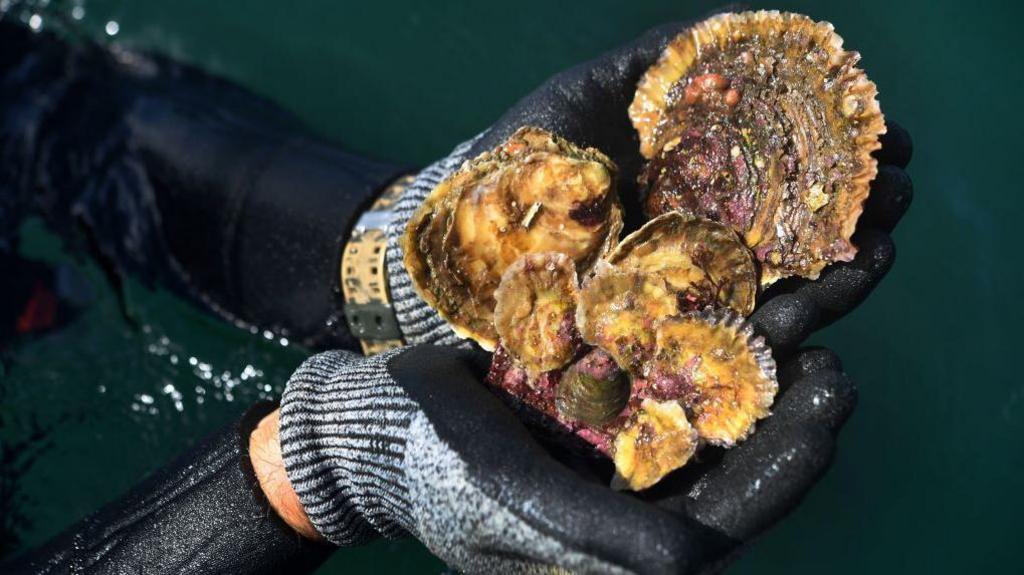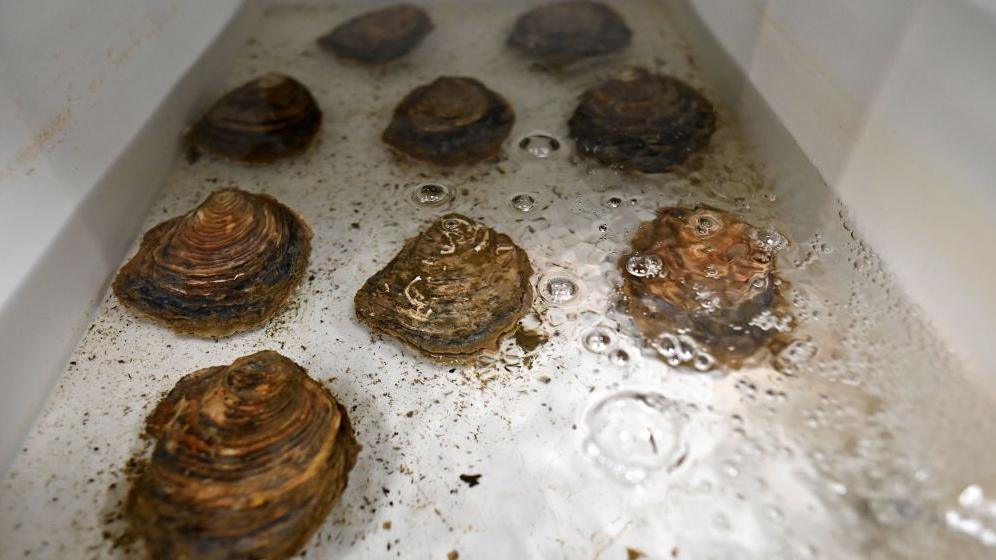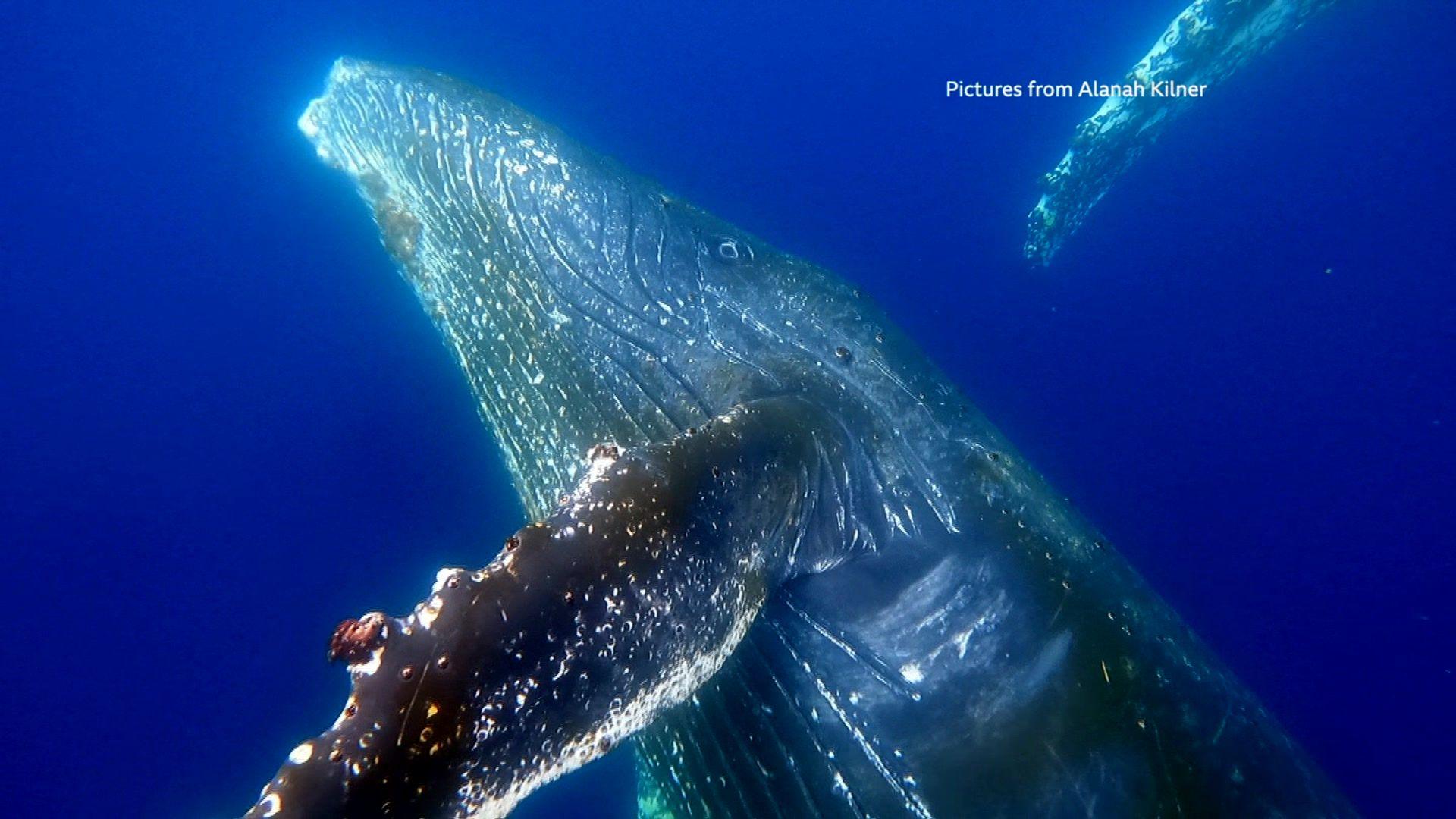How oysters are being used to clamp down on water pollution

- Published
Oysters are being used in a new project aiming to clean up the water in the Solent area.
This is a major shipping lane for passenger, freight and military vessels between the Isle of Wight and the Hampshire coast. It includes places like Southampton and Portsmouth.
Portsmouth Harbour is a busy place for the Royal Navy and has been for centuries. Their vessels form part of the 130,000 movements per year in the area.
Now the Ministry of Defence is joining forces with the British Marine Foundation to reintroduce a type of oyster that is set to help improve the environment there.
More spectacular sea stories!
Check out this mysterious new sea slug species
- Published1 March 2024
How rare seaweed discovery could help tackle climate change
- Published12 March 2024
Seaweed is the 'real ocean superstar'
- Published31 July 2023

Portsmouth Harbour is a busy place for boats and vessels
How will the oyster project work?
Native European flat oysters are being grown in crates in Portsmouth to re-establish a healthy population.
Few native European flat oysters remain in the area. They were once a keystone species - which means they were important for holding the ecosystem together. But instead they've been replaced by the invasive Pacific oyster.
It's hoped that the re-introduction of 2,000 oysters to the area after nearly half a century will encourage marine life back to the waters, which are heavily used by boats and ships.
Rod Jones, the Royal Navy’s Senior Maritime Environmental Protection Adviser, believes if successful, there is potential for these plans to help other areas as well:
"If we can grow oysters here - which is far from an ideal environment as it’s a very industrial setting - then there are clearly opportunities to grow them elsewhere, other naval bases or MOD sites."

How do oysters help the marine environment?
A healthy population of oysters can benefit UK waters by:
Filtering the seas: A single adult oyster can filter up to 200 litres of water a day, removing chemicals and pollutants.
Forming reefs: Once released and settled, the oysters merge into one another to form reefs, providing shelter and food for marine life.
Removing carbon from the environment: Oysters extract carbon from seawater to build their shells. When they die, their shells become buried in sediment and transform into solid beds of limestone, efficiently removing carbon from the atmosphere.
More stories like this
- Published10 June 2024

- Published25 February 2024

- Published9 March 2023

